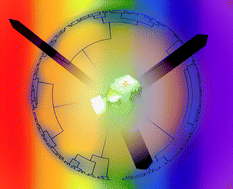
Rapid detection and identification of bacteria in sepsis
Infections of the blood are a major cause of death, even in countries where antibiotics are widely available. A large hurdle to successful treatment of this type of infection is the identification of the responsible bacteria, which can take several days. Clinicians often resort to the use of broad spectrum antibiotics, which encourages the rise of antibiotic resistant bacteria in the population.
In this collaborative work, researchers led by James Carey at the National University of Kaohsiung, Taiwan, and David Engebretson of Oklahoma City University in the United States, report the design and testing of a colorimetric sensor for bacterial identification. The process simultaneously cultures the bacteria and analyses the unique fingerprint of gases and metabolites produced. The single-step testing kit is automated and disposable, unlike current methods which require skilled technicians, and is so far able to distinguish between eight of the most common pathogens.
By combining the detection and identification of bacteria, the authors are confident that this new technology will prove to be a major step forward in the treatment and outcome of sepsis in patients.
To read the full paper, free for you for the next three weeks, please access the link below:
Single step, rapid identification of pathogenic microorganisms in a culture bottle
Yu W. Chu, Bo Y. Wang, David A. Engebretson and James R. Carey
Analyst, 2013, Advance Article
DOI: 10.1039/C3AN01175E










